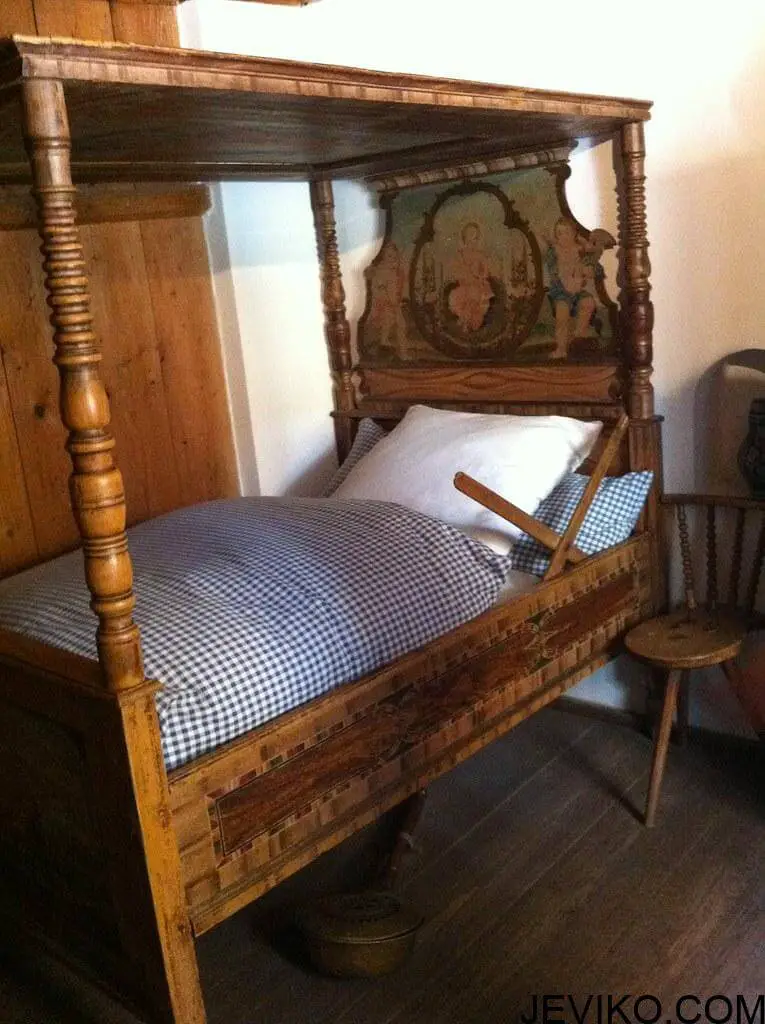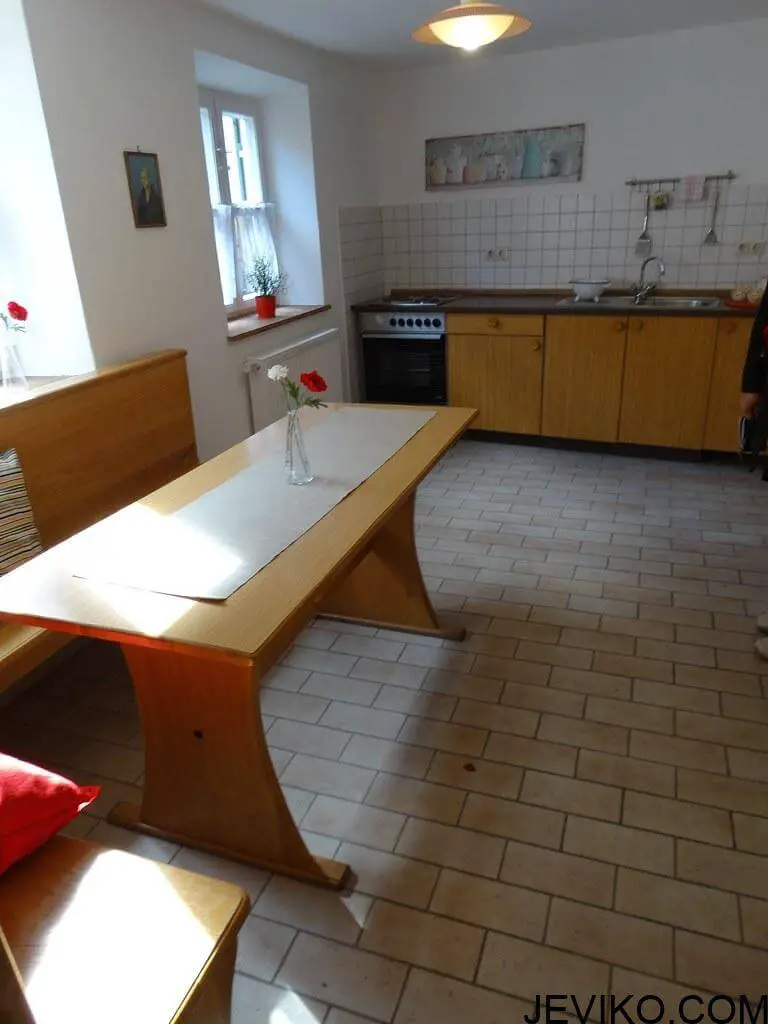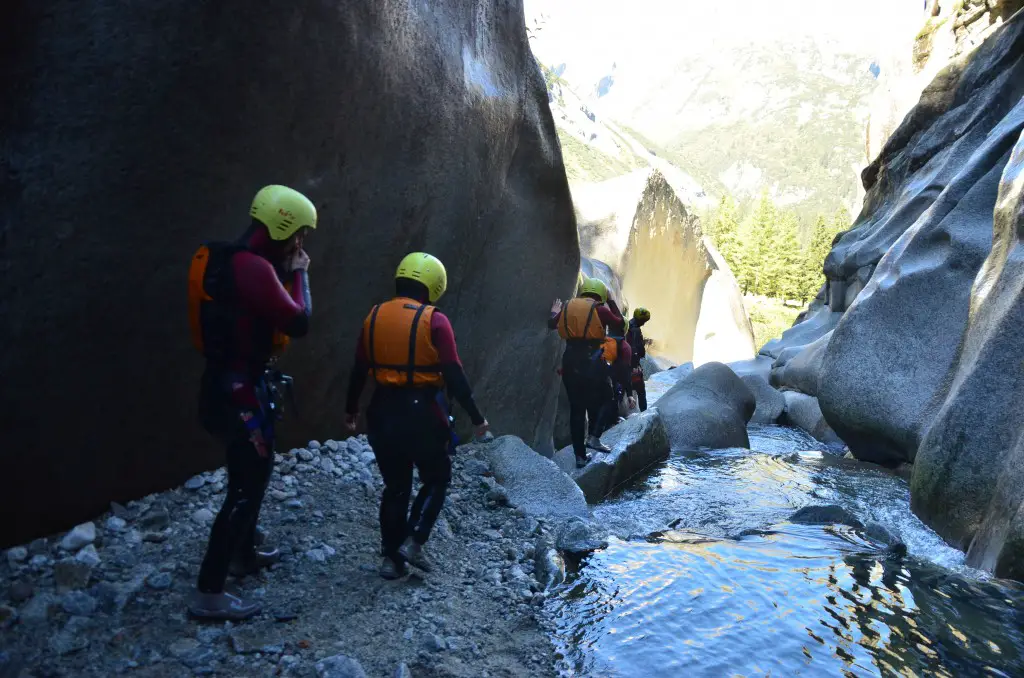
Behind the tall, mustard colored walls lies a-500-year-old community. Although it is within walking distance to the heart of town, it has a peaceful and charming atmosphere. Flower boxes and wooden shutters outline the windows of the buildings, and its eight lanes are paved with cobbled stones. The neighborhood has a church, well manicured gardens, a huge iron cast fountain, and because it is in Germany – a beer garden. At one point, it had its own school too. With its own city walls and gates, it is truly a city within the city of Augsburg. It was founded by one of the richest men in history, and even had Mozart’s great-grandfather as a resident. Currently, there is a four year waiting list for applicants. However, this exclusive gated community is not what you think it is…the Fuggerei is the world’s oldest existing social housing project.
Die Fuggerei: The world’s oldest welfare housing
Located in Bavaria, the Fuggerei is the world’s oldest social housing complex still in use, dating all the way back to 1516. Today, you can visit this gated community for the poor of Augsburg, see what the rooms were like in the 16th Century, tour a modernized apartment, and visit a small museum dedicated to the family that started it all. The name Fuggerei comes from the wealthy merchant Fugger family, who were not only the bankers of the Hapsburg Emperors and the Papacy, but also owned extensive copper and silver mines and forestry holdings throughout Europe.
The Bill Gates of the Renaissance
The Fuggerei’s tremendously wealthy benefactor was a descendant of this famous Fugger family, Jakob Fugger the Rich. Still considered one of the richest persons of all time, he endowed the Fuggerei with 10,000 Rhenish guilders in 1520 to ensure the solvency of the community. You might say he was the Bill Gates of his time, but in reality Bill Gate’s fortune doesn’t come close to Jakob Fugger’s inflation-adjusted $221 billion.
While the family’s large forestry holdings funded most of the Fuggerei, Jakob Fugger also made a tidy sum from the selling of indulgences, for which he suffered the condemnation of none other than Martin Luther himself. The Fugger family continues to manage the foundation.
Just as in 1516, to be eligible to live in the Fuggerei…
you must be:
- a resident of Augsburg
- a Catholic
- poor, but not through vice
Even today, a yearly rent of one Rheinish Gulden and three daily prayers for the Fugger family are the only other requirements. The only exception is that the currency is now Euro. The rent has not been increased, so the yearly rent is always only 88 Euro cents, or approximately 1 US dollar!
Living in the Fuggerei

About 150 people live in today’s Fuggerei which has about 67 buildings, totaling 142 apartments. Each building has two stories with separate apartments on each floor. They all have been renovated for modern conveniences such as television and running water except for house no. 13, which belongs to the museum next door.
Just as in 1516, to be eligible to live in the Fuggerei…
you must be:
- a resident of Augsburg
- a Catholic
- poor, but not through vice
Even today, a yearly rent of one Rheinish Gulden and three daily prayers for the Fugger family are the only other requirements. The only exception is that the currency is now Euro. Since rent has never been raised, the annual rent is still only 88 Euro cents, or about 1 U.S. Dollar!
I’m sure there’s a lot more to do in Kiruna – I’ve heard there’s a nice church, plus the famous Ice Hotel is nearby – but without a lot of time to go anywhere or do anything, this was the extent of our Kiruna explorations. We walked back to the hotel and caught a taxi to the airport, which ended up being a story in itself. I’ve never been in a smellier enclosed space in my life. I had to hold my breath as long as I possibly could, then when I couldn’t take it anymore, I’d draw a really deep breath from inside my scarf, which means by the time we arrived at the airport, I’d almost passed out about 15 times. I love it when things like that happen, though. I never remember the taxi rides where everything goes according to plan, but this one I won’t be forgetting anytime soon.
I’ve only got one more post to write about Sweden – our northern lights snowmobile tour in Kiruna – and then that’s it. At only 2.5 days (not including travel time), this was our shortest trip, but it also ended up being one of the most memorable. I don’t think we’ll be taking anymore vacations into the Arctic Circle anytime soon, but I’m so grateful we had the chance to go in February! What a trip!
The beauty of the Fuggerei’s architecture is its uniformity and simplicity. Dozens of mature trees provide shade to the many courtyards. Yet the most charming aspect in the Fuggerei is the doorbells. They are large iron handles in unique shapes like wreaths and pinecones. Since the Fuggerei was built before electricity, residents found their homes at night by these distinct doorbells.

As in medieval times, the Fuggerei enclave is locked at night at 10pm. Residents take turns manning the gatehouse to open up for late stragglers and fine them 50 cents or if it is after midnight 1 Euro. Other residents can volunteer as gardeners ,church caretakers, etc.
Financing Today’s Fuggerei
The Fugger family first financed the operation and the maintenance of the Fuggerei through the foundation’s interest. Since the end of the 18th century, they have been financing it through their forestry earnings. Today, the Fuggerei receives its endowments from 70% of the Fugger’s forestry profits, 10% from real estate property outside the Fuggerei, and 20% from visitors’ entrance fees. Isn’t nice to know that your visit is helping others? Each Christmas season, the residents also sell Christmas trees.
Most residents are elderly women who enjoy receiving visitors. If you see them about, don’t forget to salute them with the Bavarian greeting, “Grüß Gott.” Most importantly, remember that this living museum is still their homes. Please be respectful by not littering and avoiding excessive noise. The Fuggerei is truly a quiet oasis from the hubbub and clamor of the city. Take some time to enjoy the quiet solitude of the place and learn about one of the richest men in history that you probably never heard of.







